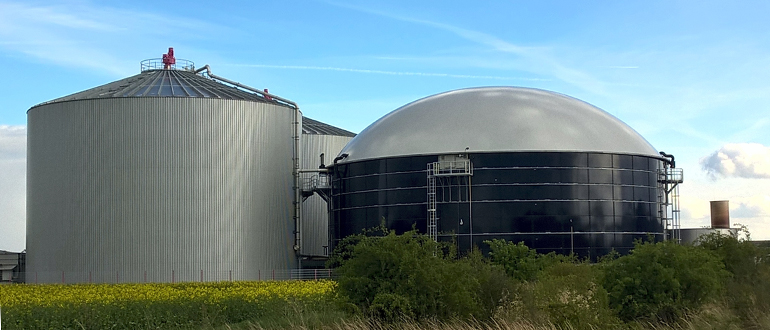Lars Bo Jensen
Master Thesis - Energy Technology - 2019
This Master Thesis gauges the viability of a developing technology, namely biogas upgrading via a Bio Trickling Filter. The technology relies on hydrogen injection into the trickling filter to convert the CO2 in the biogas into methane, via hydrogenotrophic methanogens. This increases the methane purity in the biogas in order to qualify for natural gas quality, enabling it to be injected into the natural gas network and sold with a government sponsored subsidy. The paper applies two different methods to the technology: Life Cycle Costing to estimate its Net Present Value and a consequential Life Cycle Assessment, using the ReCiPe impact assessment method, to estimate its environmental impact and depletion of natural resources. The paper also analyses the most prominent current upgrading technologies, water scrubbing and amine scrubbing, and compare their performances in different macro-economic and political scenarios. The methods are applied to the perspective of a prospective investor into an anaerobic digestion plant on Funen in the year 2020.
The paper concludes that the BTF upgrading technology can be financially viable but cannot yet compete with the market leaders of water and amine scrubbing, only outperforming those in the scenario with a stagnated economy and low electricity prices. The electricity consumption is the single largest contributor to the final cost. While the technology has several advantages, the technology is highly reliant on electricity prices being low, and in most scenarios, the increase in methane yield is not enough to counterbalance this extra cost, compared to the other technologies.
The paper also concludes that the technology has the potential to perform significantly better than the market leaders, from an environmental perspective. It has three great advantages: its higher methane yield, its theoretically nonexistent methane leakage and the fact that the CO2 in the biogas is enriched, rather than stripped and released to the atmosphere. The crux of its performance lies with its technical availability; its complexity opens the potential for a higher percentage of unplanned outages, leading to the combustion of biogas in the production plant’s torch. As long as the outages can be kept to a level that is comparable to the competitors, the BTF technology will win out in a comparison between the technologies.
In conclusion, while this technology is still in development, and as such is surrounded by a significant amount of uncertainty, this paper assesses it to be a potentially viable investment, that loses out to market leaders financially, but outperforms them from an environmental perspective. The technology can therefore be recommended to a prospective investor, if environmental concerns are a top priority. This paper recommends reiterating the analysis once the development phase has ended, so that more accurate data may be applied. Furthermore, as electrolysis technology grows more mature, and substrates become less available, this paper concludes that the potential of the BTF technology will likely only increase with time.
